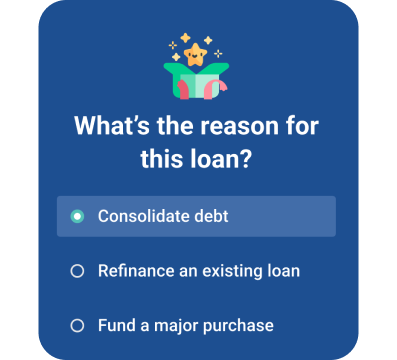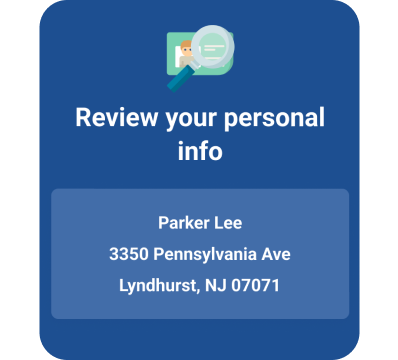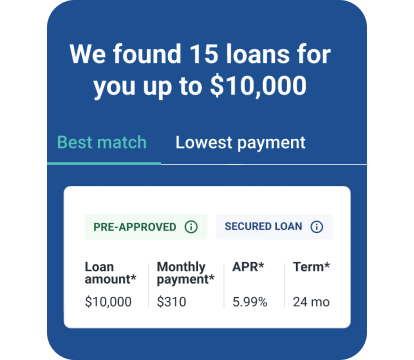In this article:
If you've struggled to set money aside in savings, a significant emergency expense can cause an incredible amount of stress. Depending on your situation, you may be able to get an emergency loan through a personal lender, payday lender or even your credit card issuer.
Before you apply, though, consider alternatives that can potentially save you some money in the long run.
What Is an Emergency Loan?
An emergency loan can come in a few different forms, including personal loans, payday loans and credit card cash advances.
Personal Loans
Because personal loans typically don't have many, if any, restrictions on how you use your funds, you can use them if your car breaks down, you lose your job, a major appliance breaks or almost anything else.
Personal loan terms can vary by lender from under a year to several years, but you can often get access to more cash via personal loans than the two options listed below.
You do, however, have to apply for the personal loan, and approval and loan terms typically are based on your creditworthiness. Also, while some personal lenders offer quick funding, others may not get you your cash until several days after approval.
Interest rates you'll be eligible for can range from the single digits to upwards of 100%, depending on the lender and your credit situation.
Find a personal loan matched for you
Credit Card Cash Advances
Credit card cash advances are easy to come by if you already have an account. Simply take your card to an ATM or a bank branch and provide your four-digit PIN to request the money. You can then use the cash for anything you want.
There are, however, a few things to keep in mind before requesting a cash advance. First, cash advances are typically assessed a higher APR than regular purchases, and there's no grace period, which means the interest starts accruing immediately.
Also, credit card issuers typically tack on a cash advance fee, which can cost you an extra 5% or more of the transaction amount. And because credit cards don't have set repayment terms, it may take you several years to pay that money back if you're not careful.
Finally, credit cards typically have a cash advance limit that's lower than your account credit limit. So if you have a $3,000 limit on your card, you likely won't be able to get that full amount in cash. Check your latest credit card statement or call the number on the back of your card to find out how much you can borrow in cash.
Payday Loans
Payday loans typically are small-dollar loans—often under $500—that you can use for anything you'd like. You can usually apply for one online or in person.
These loans have become popular because they're easy to qualify for. Credit requirements are much less stringent compared with personal loans, and some payday lenders don't perform a hard credit inquiry or make sure you can repay the debt at all.
However, payday loans typically charge exorbitant interest rates, with an average annual percentage rate (APR) of roughly 400%.
Also, payday loans often have a repayment term of just two weeks, giving you little time to cover your emergency expenses and drum up the cash to pay back the debt.
Steps to Getting an Emergency Loan
If you're experiencing a financial emergency, your first instinct may be to try to get cash as quickly as possible. But before you whip out your credit card or head down to get a payday loan, consider these steps.
1. Check Your Credit Score
Depending on where your credit stands, one loan type may be better than another. For example, if your credit is considered fair or better—that's a FICO® Score☉ of 580 or higher—you may be able to get a better interest rate and loan terms with a personal loan than other options.
Even if your credit score is considered poor, there are some lenders that offer short-term personal loans with better terms than payday loans.
Take a few minutes to check your FICO® Score and find out which options are realistic for your situation.
2. Shop Around
If you're thinking about getting a personal loan, take some time to shop around and compare interest rates and loan terms from several personal lenders before you apply with one. With Experian, you can even check rate offers from several lenders in one place, based on your credit scores. This can allow you to easily pick the lender that will save you the most money.
If you're considering a credit card cash advance and have multiple credit cards, check the cash advance fees and APRs on each of your cards to see which one will charge you the least. Also, be sure to look up the cash advance limits to ensure you can get the money you need without tapping too many credit cards.
Because payday loans typically have much less favorable terms than personal loans and credit card cash advances, it's best to avoid them altogether.
3. Consider Alternatives
Before you submit an application for a personal loan or request a credit card cash advance, make sure to look into other options that could save you some money. You may even find niche solutions to your specific emergency need. More on those options below.
When Does It Make Sense to Get an Emergency Loan?
If you don't have enough savings to cover an emergency expense, an emergency loan may be able to help you bridge the gap. Depending on your credit situation, however, some emergency loans could do more harm than good in the long run. For instance, you should learn how same day loans work before you sign up for one, as the interest rates can be very high.
If your credit is in decent shape, you may be able to get a personal loan with a reasonable interest rate, but credit card cash advances are often cheaper than personal loans for bad credit. Even if you can qualify for a personal loan with a decent interest rate, it may still make sense to consider other options instead.
Can I Get an Emergency Loan With Bad Credit?
It is possible to qualify for an emergency loan with bad credit. If you're hoping to qualify for a personal loan, though, your options will be limited. You can typically expect an interest rate upwards of 30% or even in the triple digits, depending on how messy your credit history is.
It's also possible to get a personal loan without a credit check. Some lenders use alternative credit data, such as bank account information, to determine your creditworthiness. Also, payday lenders and some bad-credit personal loan companies won't run a credit check, but their interest rates are often astronomically high, so the trade-off likely isn't worth it.
With a credit card cash advance, there's no additional credit check when you submit your request, so your credit score doesn't matter.
What Are Other Ways to Access Funds Quickly?
Before you pull the trigger on an emergency loan, here are some alternatives that could save you money and make your life a little easier.
- 0% APR credit card: If your credit score is considered good (that's a FICO® Score of 670 or higher), you may be able to qualify for a credit card that offers an introductory 0% APR. These promotions can last anywhere between six and 18 months, which gives you time to cover your expenses and pay off the balance interest-free. Just keep in mind that cash advances aren't included in a 0% APR promotion.
- Medical bill repayment plan: If your emergency involves medical bills, speak with the medical provider about payment plan options. Some will allow you to pay off your medical debt interest-free with predetermined installment payments.
- Income-driven student loan repayment plan: If you're considering an emergency loan to cover ongoing expenses, getting a break on your student loans may help the cause. If you qualify, your federal student loan may be eligible for an income-driven repayment plan that can reduce your monthly payments to a percentage of your discretionary income.
- Personal loan from a family member or friend: Asking family or friends for financial help can be tough. But if the alternative is high interest, crippling debt, it may be your best option. To avoid any future quarrel, iron out when you'll repay them and with what, if any, interest beforehand, and be sure to stay true to your word.
- Home equity line of credit: Also called a HELOC, this option typically comes with a low interest rate because it's secured by the equity you have in your home. The only catch is that you typically need to have a HELOC in place already to gain access to funds quickly—you may even get a debit card tied to the account that you can use to make purchases or get cash. If you don't have one, it can take a few weeks to close on a HELOC. Also keep in mind that if you don't pay back the loan as agreed, you could lose your home.
As you consider these options, think about your needs and the option that's best suited to solve your cash flow problem without putting you in a much more difficult financial spot going forward.
Take Steps to Prepare for the Next Emergency
It's impossible to predict when emergencies will happen, so once you've managed to recover from the current one, take some steps to get ready for the next one.
Start by budgeting money specifically for emergencies. Some banks may even allow you to open additional savings accounts for this purpose. If money is tight, you may not be able to save much, but any amount can make it easier to weather the next storm when it comes.
Also, work on improving your credit so that you'll have more financing options if you find yourself in the same position in the future. That includes checking your credit report to address potential issues and errors, paying your bills on time, keeping your credit card balances low and avoiding debt unless you absolutely need it.
While these steps won't inoculate you from future emergencies, they can give you some peace of mind knowing you'll be more prepared for when they invariably occur.




